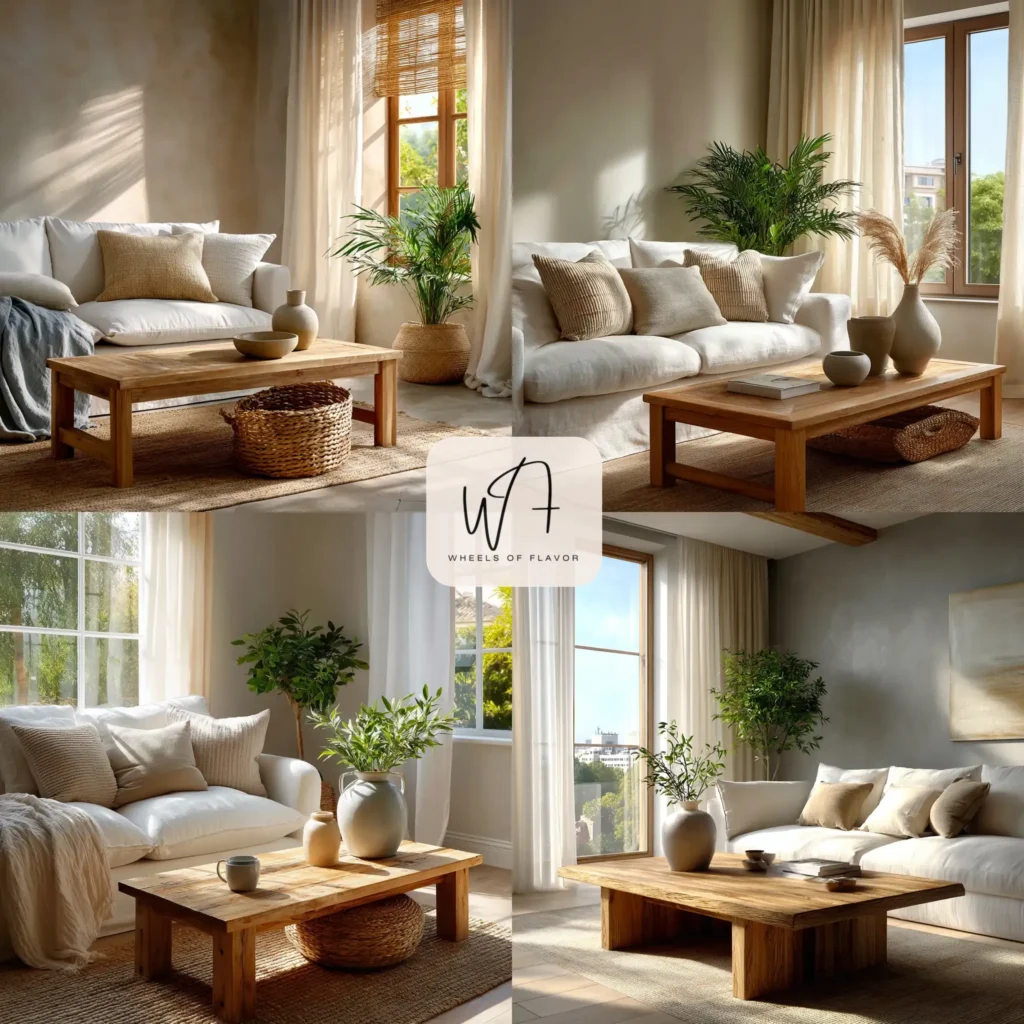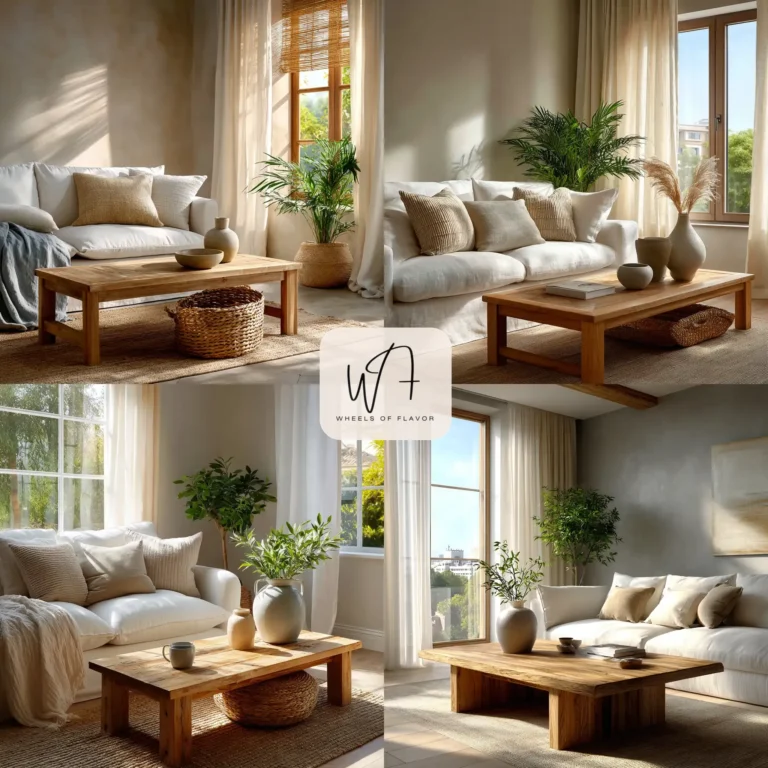Japandi interior design blends the minimalist elegance of Japanese aesthetics with the cozy functionality of Scandinavian style. This harmonious fusion creates serene, clutter-free spaces that prioritize simplicity, natural materials, and timeless beauty. If you’re looking to transform your home into a peaceful sanctuary, this guide explores five stunning ways to embrace Japandi interior design while incorporating practical tips and inspiration.
Table of Contents
What Is Japandi Interior Design?
Japandi interior design is a hybrid style that merges the clean lines and minimalism of Japanese design with the warmth and practicality of Scandinavian interiors. The term “Japandi” combines “Japan” and “Scandi,” reflecting a perfect balance of two cultures that value craftsmanship, functionality, and understated elegance. This style emphasizes natural textures, neutral color palettes, and open spaces that promote tranquility and mindfulness.
The beauty of Japandi interior design lies in its ability to create spaces that feel both modern and timeless. By focusing on quality over quantity, this design philosophy encourages you to curate your home with intention, selecting pieces that are both beautiful and functional.
Why Choose Japandi Interior Design?
The appeal of Japandi interior design lies in its versatility and calming effect. It’s ideal for those who want a home that feels peaceful yet sophisticated. Here are a few reasons why this style is gaining popularity:
- Minimalist Aesthetic: Japandi prioritizes clutter-free spaces, making it perfect for small apartments or busy households.
- Natural Materials: Wood, bamboo, linen, and stone create a connection to nature, fostering a sense of calm.
- Neutral Tones: Soft whites, beiges, grays, and muted earth tones create a soothing atmosphere.
- Timeless Appeal: Japandi’s focus on quality craftsmanship ensures your space remains stylish for years.
To dive deeper into design trends, check out our Styles and Trends category for more inspiration.
5 Stunning Ways to Incorporate Japandi Interior Design
1. Embrace a Neutral Color Palette
A hallmark of Japandi interior design is its use of neutral, muted colors. Think soft whites, warm beiges, and subtle grays paired with occasional pops of black or deep green for contrast. These tones create a calming backdrop that allows furniture and decor to stand out without overwhelming the space.
To achieve this look, paint unprotected choose matte finishes for walls and furniture to enhance the minimalist vibe. Incorporate natural wood tones, such as oak or walnut, for warmth and texture.

2. Prioritize Natural Materials
Japandi interior design celebrates the beauty of natural materials. Incorporate raw wood furniture, bamboo accessories, and linen or cotton textiles to add texture and warmth. For example, a wooden dining table with clean lines paired with woven chairs creates a perfect Japandi balance of simplicity and coziness.
Avoid synthetic materials like plastic or overly polished metals, as they disrupt the organic feel of Japandi. Instead, opt for handcrafted ceramics, stone accents, or rattan elements to enhance authenticity.
For more ideas on incorporating natural elements, explore this insightful article from Apartment Therapy about blending Japanese and Scandinavian styles.
3. Keep It Minimal and Functional
Minimalism is at the heart of Japandi interior design. Every piece in a Japandi space should serve a purpose, whether it’s functional or aesthetic. Choose furniture with clean lines and avoid excessive ornamentation. For example, a sleek wooden bench with a single cushion can double as seating and decor.
Declutter your space by keeping only essential items on display. Use hidden storage solutions, like woven baskets or built-in shelves, to maintain a clean and open environment.
4. Create Open and Airy Spaces
Japandi interiors thrive on open, uncluttered spaces that promote relaxation. Arrange furniture to maximize natural light and create a sense of flow. Sliding doors, inspired by Japanese shoji screens, can add a touch of elegance while saving space.
Use low-profile furniture to keep sightlines clear and make rooms feel larger. A low platform bed with crisp white bedding is a classic Japandi choice for bedrooms, combining simplicity with comfort.
5. Add Subtle Textural Contrast
Texture plays a crucial role in Japandi interior design. Combine smooth surfaces, like polished wood, with tactile elements like wool throws or linen cushions. A handwoven rug in neutral tones can tie the room together while adding warmth underfoot.
For inspiration, consider incorporating ceramic vases or wooden trays with subtle grain patterns. These small details add depth without compromising the minimalist aesthetic.
Image Prompt: A Japandi bedroom with a low wooden platform bed, white linen bedding, a woven wool throw, and a ceramic vase on a minimalist nightstand, soft natural light illuminating the space –ar 9:16
Alt Attribute: Japandi interior design bedroom with minimalist furniture and textural contrast
How to Balance Japandi’s Minimalism with Coziness
One of the challenges of Japandi interior design is balancing its minimalist roots with the cozy warmth of Scandinavian style. To achieve this, focus on layering textures and incorporating soft lighting. For example, paper lanterns or ceramic table lamps with warm bulbs can create a soft, inviting glow.
Additionally, use plush cushions or throws sparingly to add comfort without cluttering the space. A single statement plant, like a bonsai or monstera, can bring life to the room while maintaining simplicity.
For more tips on creating cozy minimalist spaces, visit our Styles and Trends page.
Common Mistakes to Avoid in Japandi Interior Design
While Japandi interior design is relatively easy to implement, there are a few pitfalls to avoid:
- Overcrowding the Space: Too many decor items can disrupt the minimalist aesthetic. Stick to a few high-quality pieces.
- Ignoring Functionality: Every item should serve a purpose, whether practical or emotional.
- Using Harsh Colors: Bright or overly bold colors can clash with Japandi’s neutral palette. Stick to soft, earthy tones.
- Neglecting Texture: Flat surfaces can make a space feel cold. Incorporate natural textures to add warmth.
FAQs About Japandi Interior Design
What is Japandi interior design?
Japandi interior design is a blend of Japanese and Scandinavian styles, combining minimalism, natural materials, and neutral colors to create serene, functional spaces.
How can I make my home feel more Japandi?
Focus on neutral colors, natural materials like wood and linen, and minimalist furniture. Keep spaces open and clutter-free, and add subtle textures for warmth.
What colors are best for Japandi interior design?
Neutral tones like white, beige, gray, and soft earth tones work best. You can add subtle accents of black, deep green, or muted blue for contrast.
Where can I find Japandi-inspired furniture?
Look for furniture made of natural materials like wood or bamboo at stores like IKEA, West Elm, or CB2. Online marketplaces like Etsy also offer handcrafted Japandi-style decor.
How do I balance minimalism and coziness in Japandi design?
Use soft textiles like wool throws or linen cushions, warm lighting, and a few statement pieces like plants or ceramics to add coziness without clutter.
By following these principles, you can create a Japandi interior design that’s both stylish and serene, transforming your home into a peaceful retreat. For more design inspiration, explore high-authority resources like Dwell or check out our Styles and Trends category for the latest ideas.

